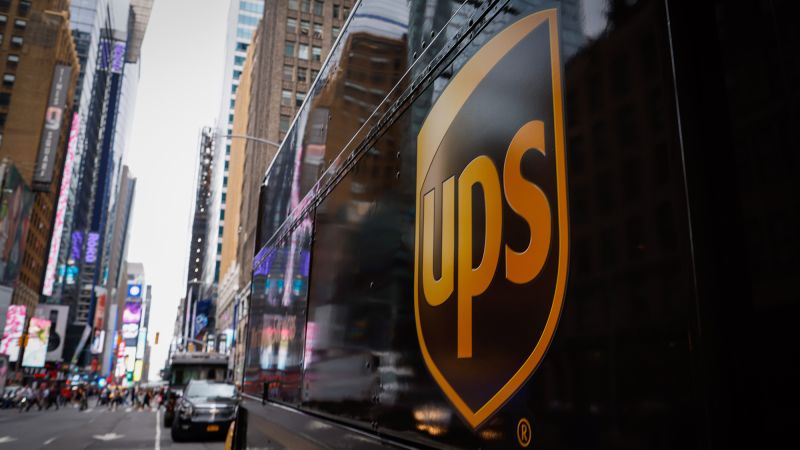In a significant development on the corporate landscape, United Parcel Service (UPS) announced on Tuesday that it will be laying off approximately 20,000 employees this year, which represents around 4% of its global workforce. This decision does not stem from the tariffs that have affected various sectors but is primarily attributed to an increased reliance on technology and a strategic pivot regarding its business operations with Amazon, its largest customer. These actions are part of a broader effort to streamline operations and improve efficiency amid changing market dynamics.
Earlier this year, during the month of January, UPS introduced what it describes as a “glide down” strategy aimed at reducing its reliance on Amazon. The goal is to cut its business dealings with the online retail giant in half by mid-2026. Carol Tomé, the CEO of UPS, emphasized in her statements on Tuesday that a significant portion of the Amazon business they are stepping away from is unprofitable and not compatible with the company’s network infrastructure.
An analysis of UPS’s recent performance revealed a considerable drop in package volumes generated from Amazon, with a 16% decrease in the last completed quarter. This figure surpassed the company’s prior forecasts for that same period. In alignment with the glide down plan, UPS disclosed intentions to close 73 facilities across the United States by the end of June, signifying a major reduction in physical infrastructure linked to its Amazon business.
Additionally, UPS is placing greater emphasis on operational automation. This encompasses a range of applications from the sorting of packages to label application and the loading and unloading of delivery trucks. As a result of this automation initiative, UPS anticipates that around 400 of its facilities will become partially or fully automated, demonstrating a forward-thinking approach to adapt to modern technological advancements.
With this strategic reconfiguration, Carol Tomé indicated that UPS aims to reduce its dependence on human labor, suggesting a significant shift in the operational model. While there are challenges related to labor reductions, this effort underscores the company’s commitment to leveraging technology to enhance efficiency.
UPS is also grappling with the repercussions of former President Donald Trump’s tariffs, notably the imposition of a 10% tariff on most imports and a staggering 145% tariff on imports from China. The company reported experiencing some impacts from these tariffs, although there remains uncertainty regarding the long-term effects on its operations and strategy moving forward.
Alongside these tariff-related challenges, Tomé noted that customers with substantial dealings in China are not contemplating exiting those markets but are, nevertheless, uncertain about their future steps. Many of these customers harbor hopes for a rollback of tariffs, which may have wider implications for their businesses.
In talking about the unpredictability surrounding orders from China, Tomé candidly expressed her concerns about the situation. She acknowledged that while some announcements have been made regarding trade, the viability and sustainability of those measures remain ambiguous, underscoring the myriad uncertainties present in global trade relations.
Despite the foreseen obstacles due to both the tariffs and the diminishing relationship with Amazon, UPS expects its customers to feel the windfall of these changes. For the second quarter, UPS forecasts a decline in revenue compared to the same period last year. However, the company refrained from retracting its full-year guidance just yet, although Tomé indicated that adjustments could be made in the future depending on evolving circumstances.
The CEO conveyed a prevailing sense of unease regarding the second half of the year, emphasizing that the ongoing tariffs pose potential impacts on American consumers. While consumer sentiment has waned compared to levels observed at the beginning of the year, Tomé remained cautiously optimistic, noting that overall consumer health remains relatively stable, which may provide some buffer against economic headwinds.
In summary, UPS’s strategy signifies a proactive transformation in response to evolving market realities, technological advancements, and the intricacies of international trade. The decisions made today will undoubtedly shape how UPS navigates the complexities of the global economy moving forward.



